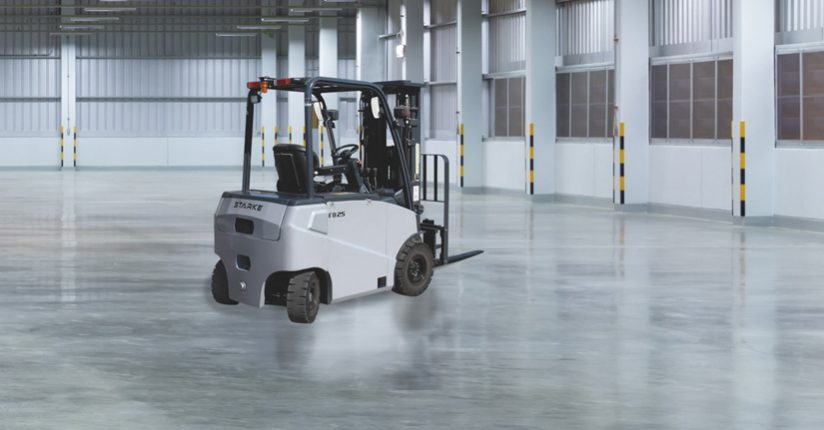The Advantages of AC Electric Motors
Beginning in the early 90’s, the growth and development of the AC – or alternating current – electric motor sparked a revolution in the material handling equipment industry. Once viewed as an option of last resort, AC motors have now emerged as a superior alternative to internal combustion or direct current (DC) motors for equipment in numerous applications. In particular, AC models are preferred in conditions that place a premium on air quality, including indoor manufacturing or warehousing facilities and factories within the food, beverage and pharmaceutical industries.
As of 2013, electric forklifts represent more than 60% of the North American market, with even greater adoption rates in Europe. With the distinct advantages provided by AC motors – including limited noise, zero emissions and low maintenance – it is easy to see why there is so much consumer demand for AC units in today’s market.
The transition towards AC motors originally began with the introduction of the 3-phase AC brushless motor in the early 1990’s. Before then, most electric units featured DC motors, which generate power via direct contact between the brushes, commutator and rotator. The output of these DC motors was heavily dependent upon the size and durability of the brush, which limited efficiency and output of the unit. What’s more, the fragile brushes were easy to damage even under typical operating conditions, resulting in frequent brush replacements and regular maintenance.
The introduction of the 3-phase AC drive motor, however, resolved many of the issues previously associated with electric motors. Unlike DC motors, brushless AC motor use fixed rotator windings, which indirectly transfer electromagnetic current to the rotator to produce power with a series of magnets that pulse to produce rotation. By replacing the direct contact of the DC motor with the brushless operation of the AC motor, AC units now feature two very important improvements over previous iterations.
First, AC motors are now capable of handling significantly higher peak current, resulting in a dramatic increase in torque and speed while reducing the overall size of the unit. This, in turn, allows AC units quickly accelerate to full speed, thereby improving operator efficiency and productivity. Secondly, this change eliminates the need for a direct contact brush system, improving durability and reducing susceptibility to wearable damage. The result is a reliable unit that requires minimal maintenance or unnecessary downtime, as well a reduction in operational costs and improved productivity. In addition, the use of regenerative braking systems to recover the kinetic energy normally lost in deceleration to recharge the battery means that AC units remain productive for longer periods between changes. These qualities also make electric AC motors more environmentally friendly than many of the alternatives. AC electric motors produce less heat due to friction and no emissions and exhaust fumes. This helps to improve the overall air quality, reduces ambient noise and vibration, and limits damage to products.
For these reasons, Stärke Material Handling Group utilizes high efficiency AC motors throughout our line of forklifts and material handling equipment. Beyond the performance-based advantages listed above, our AC units are also more user-friendly than other, similar models. For example, most AC electric units from Stärke include a canBUS controller system capable of making precise, sensitive adjustments to forward/backward acceleration, drive and lifting speeds as AC drives control motor speed by changing the frequency of the electrical supply to the motor. An AC motor reduces power line disturbances, lowers power demand on start, offers controlled acceleration, controlled starting current, adjustable operation speed, and adjustable torque. This customization is not possible with a DC motor, as the individual magnets used in DC motors are incapable of moving in more than one direction at any given point in time (i.e., pushing or pulling), while AC motors are outfitted with multiple magnets capable of moving independently.
Programmable canBUS controllers are also responsible for several innovative safety features found throughout Stärke’s lineup of AC units. Consider the anti-rollback feature currently found in Stärke’s electric counter balanced forklifts that prevents the unit from rolling backwards on an incline once the operator releases the brake pedal. In a similar fashion, Stärke’s OPS30 order picker includes a feature that automatically reduces the unit’s speed in potentially dangerous situations such as operating the unit with an extended mast or taking sharp turns.
As one of the most comprehensive material handling solutions providers in the industry, Stärke offers a massive selection of AC units throughout our line of material handling equipment. The depth and variety of our line ensures that Stärke products can capably meet the challenges of your material handling application.


So you don’t use a single DC motor in your entire line of equipment? Really? Not one?
It’s great your industry has adopted more electric vehicles – I honestly wasn’t aware that so much of the material handling industry was electric. I’ll be using this in my essay!